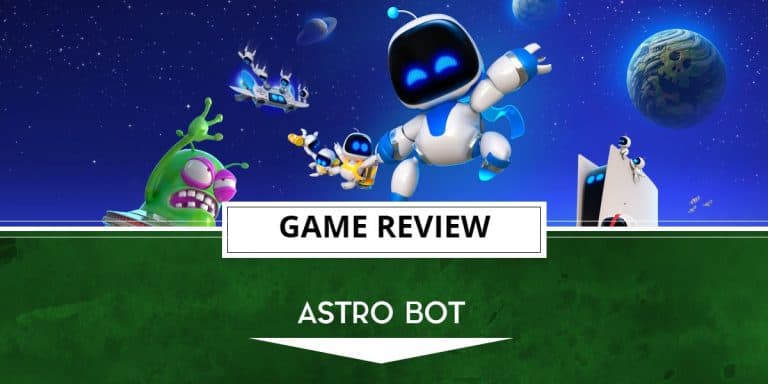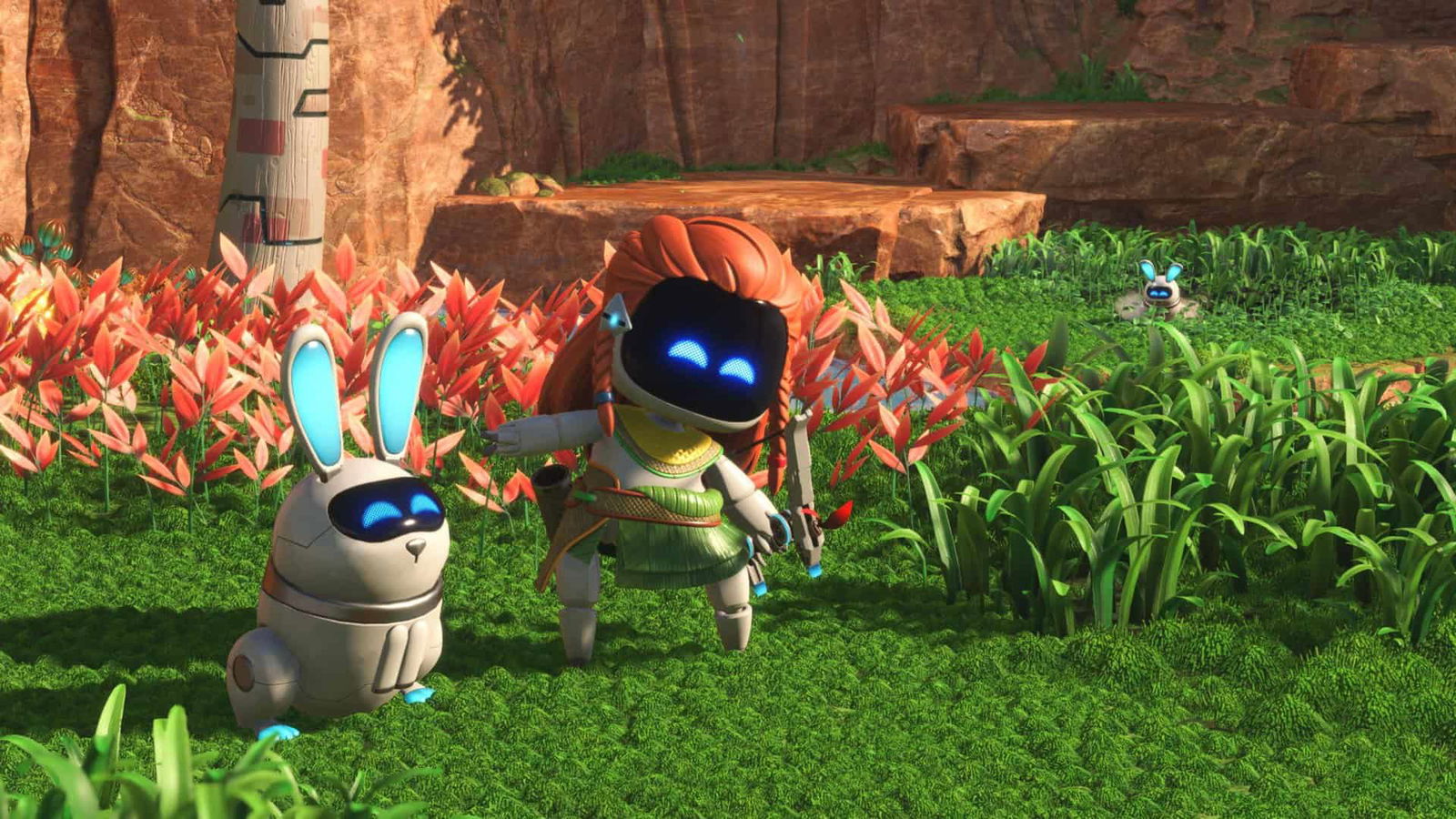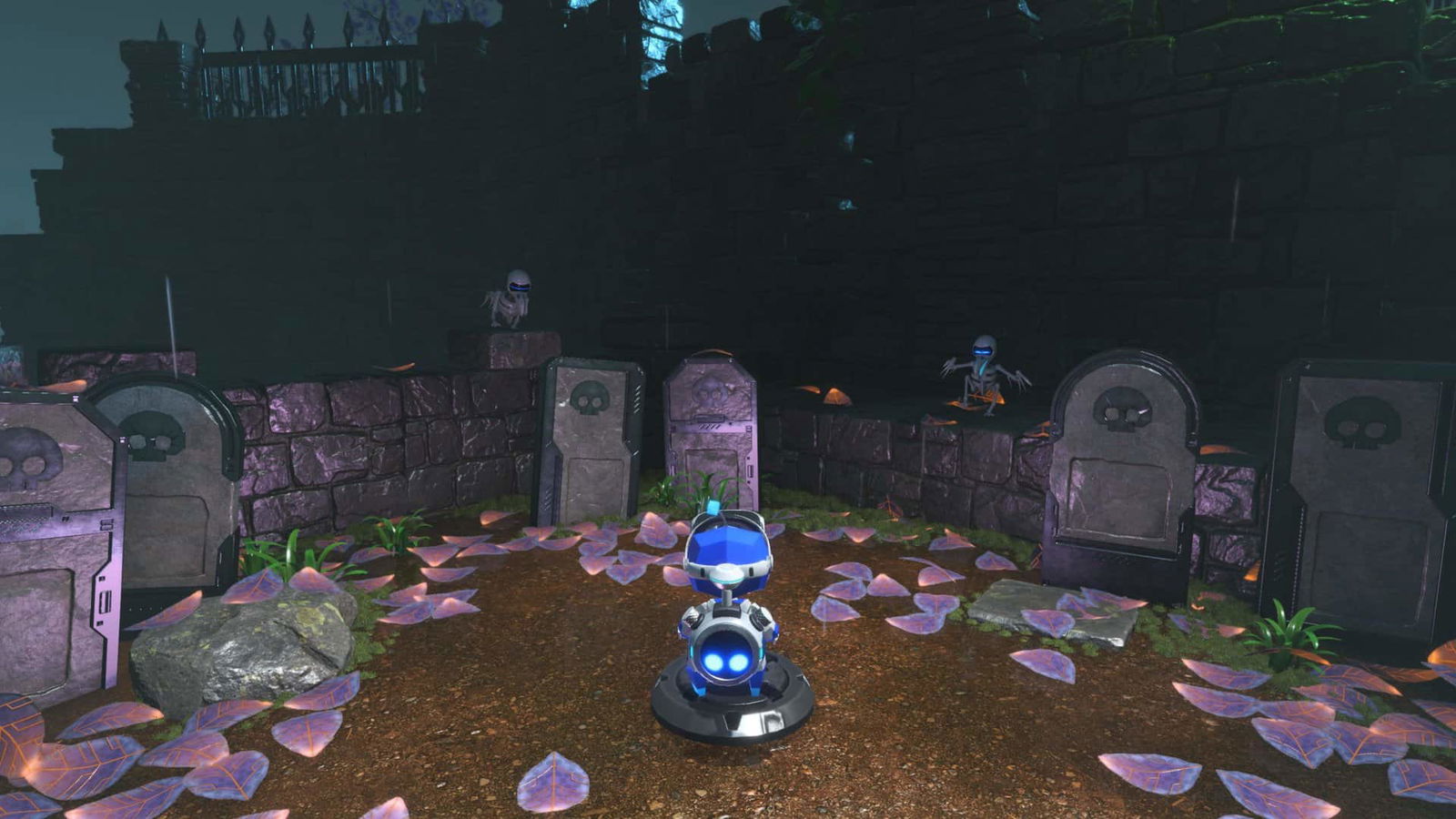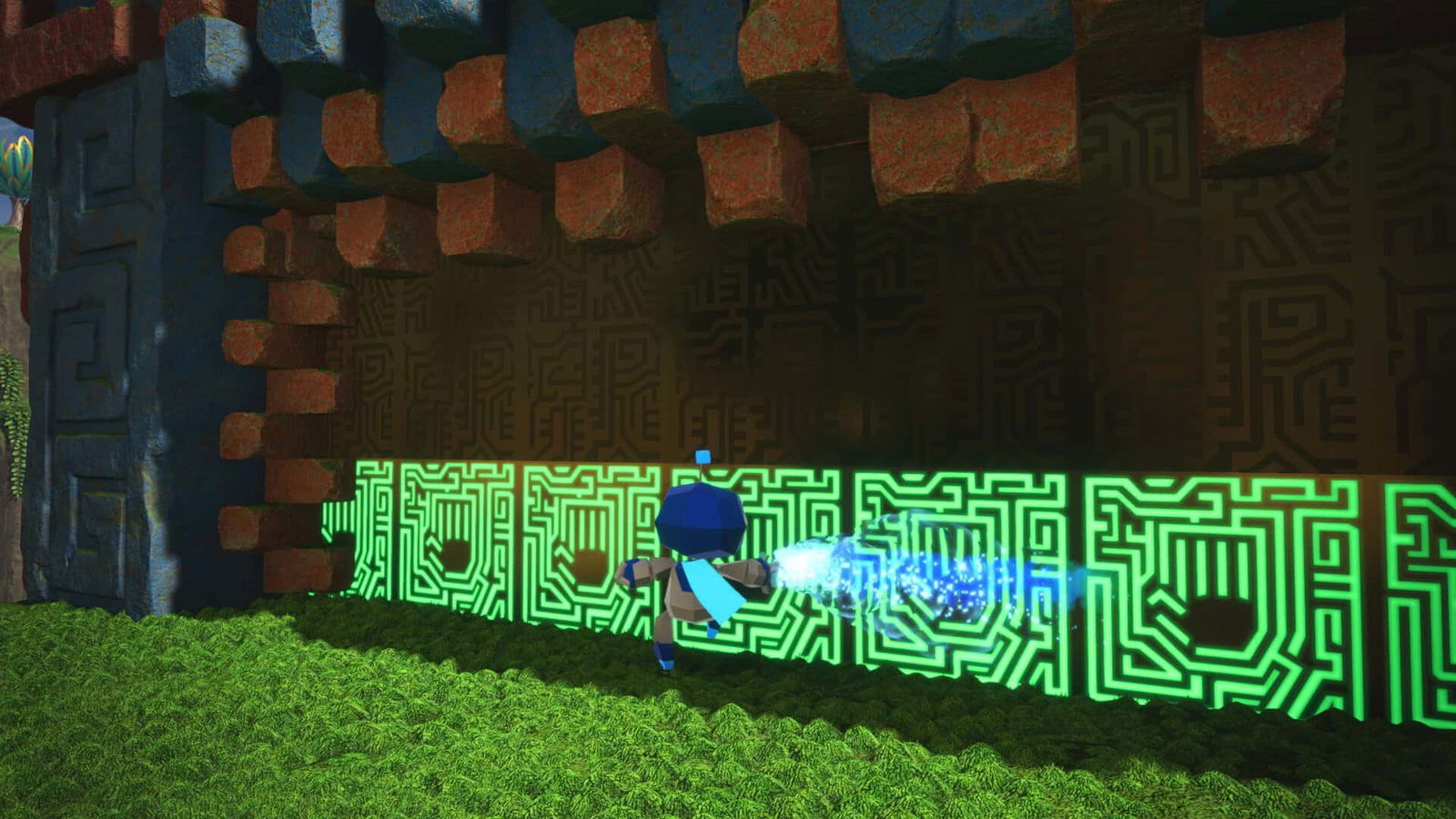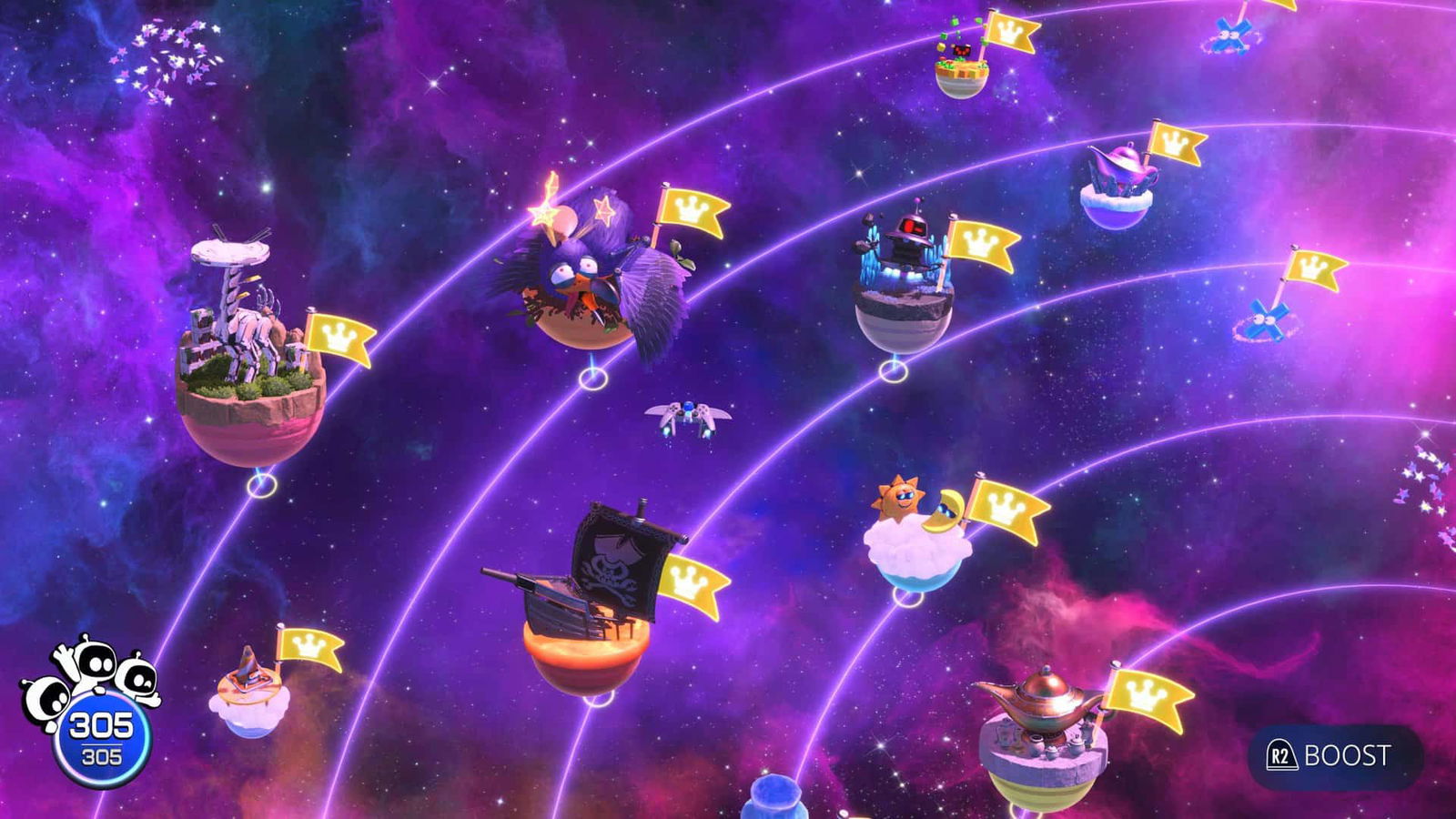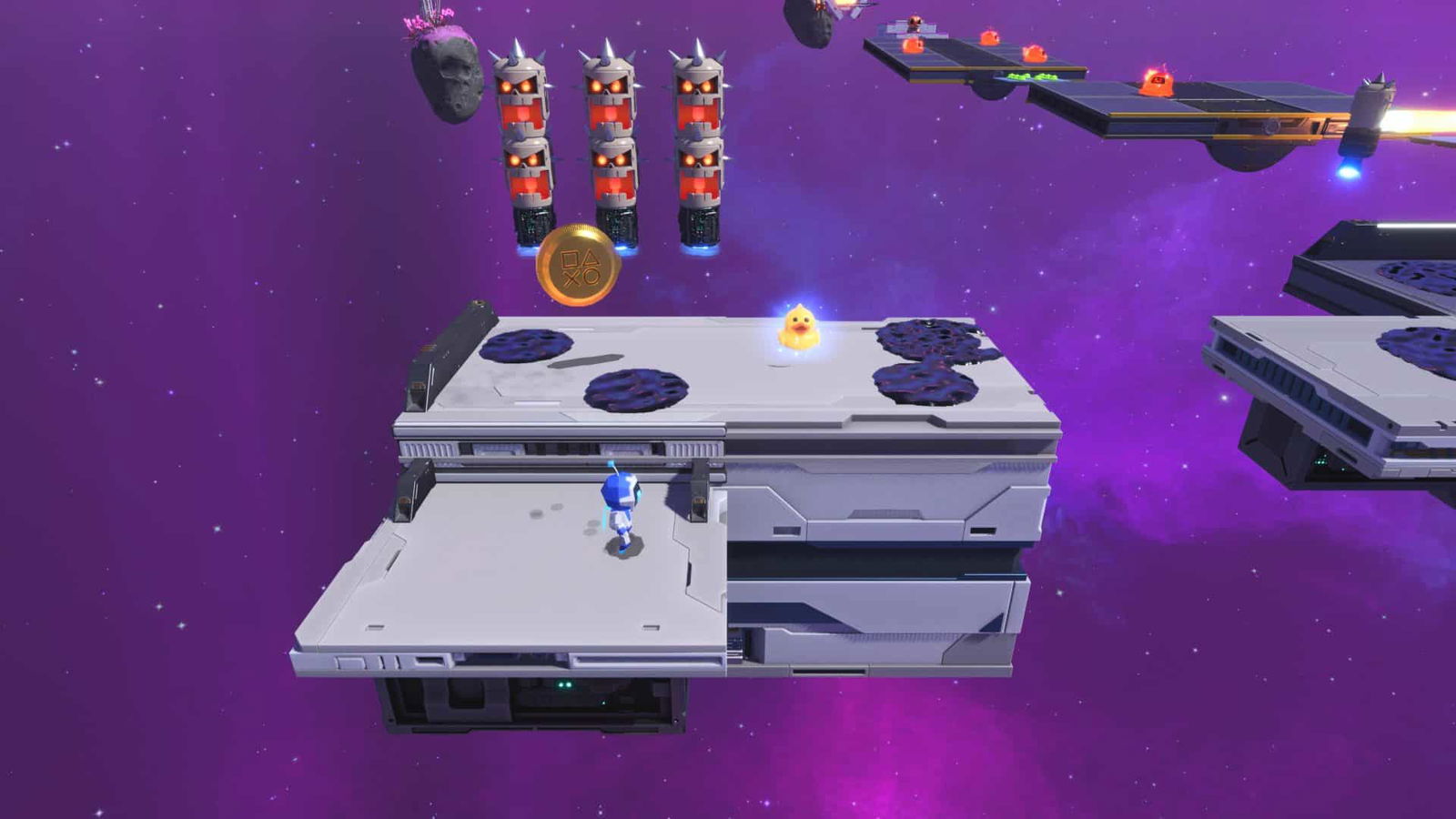Sony’s games have shifted from youthful whimsy to serious, mature-themed third-person narratives, leaving little room for all-ages fare. This pivot has brought Sony significant prosperity, making it logical to continue this trend. Now, the company appears to be changing its focus once again to chase the elusive live-service cash cow, and although the results of that have been mixed, to say the least with great successes and also utter failures.
Sony’s latest title, ASTRO Bot, fits neither of their two current strategies and instead harkens back to PlayStation’s past glories. ASTRO, who fully debuted in a 2018 PlayStation VR game, ASTRO Bot: Rescue Mission, became more widely known in the free pack-in title, ASTRO’s Playroom, released for the PlayStation 5 in 2020. Sony aimed to use ASTRO to promote the DualSense controller’s features, similar to its strategy with the PSVR. Playroom, more than accomplished its mission, and despite being seen as a tech demo, its gameplay and homage to PlayStation’s history made it a must-play for PS5. The game’s popularity led to hopes for a full-fledged ASTRO title. Sony also took notice and thus retained Team ASOBI! after restructuring Japan Studio in 2021, fueling rumors a new ASTRO game was in development.
Fast forward almost four years later, with the release of ASTRO Bot for the PlayStation 5, which builds on its predecessors, offering a creative and joyous gaming experience. At the same time, celebrating the legacy of the PlayStation brand.
Game Name: Astro Bot
Platform(s): PlayStation 5 (reviewed)
Publisher(s): Sony Interactive Entertainment
Developer(s): Team Asobi
Release Date: September 6, 2024
The Power of PlayStation
Our adorable mechanical protagonist rides inside the PlayStation 5 with a band of artificial comrades, ASTRO is then pulled towards the spacecraft of his nemesis, Nebulax. The evil green alien removes the CPU from the PS5, sending ASTRO and friends hurling towards a nearby planet. After crash landing, his trusty DualSense Speeder restores ASTRO’s health, and he begins the journey to repair his spaceship.
To accomplish this, ASTRO must travel to five major worlds, each with its own subset of planets to explore. These planets are filled with collectibles like coins, puzzle pieces, and bots. While Playroom was a trip down memory lane with ASTRO collecting artifacts from Sony’s console history, ASTRO Bot focuses on the actual video games, turning 170 of the over 300 bots into replicas of memorable PlayStation characters. These bots play a helpful role with at least 250 needed to roll credits.
Although the bots don’t directly affect gameplay, their presence gives ASTRO a sense of place in Sony’s franchises. ASTRO Bot establishes ASTRO as the de facto PlayStation mascot, bridging Sony’s past and present. Made with PlayStation’s 30th anniversary in mind, the game celebrates Sony’s origins while highlighting what’s been lost on its road to glory. Even without the brand association, ASTRO Bot is a standout 3D platformer, but the connection to PlayStation history gives the game its beating heart.
Exploring the Joys of Platforming
Much like in previous outings, ASTRO has a limited arsenal with traditional and charge punches, jumps, and a hover that extends jumps and slices enemies. This simple moveset is central to exploring ASTRO Bot’s lands. Thankfully, Team ASOBI improved on the gimmicky powersuits from Playroom, introducing a wider array of special abilities.
While some abilities like the Diving Penguin and Motion Controlled Monkey are less effective, most are fun and make you wish you could keep them. Each of ASTRO’s planets features a central ability, such as the Jet Powered Bulldog for zooming across construction sites or the Space Fueled Chicken for vertical jumps.
Unique abilities like the Sponge, which changes ASTRO’s size with water, and the Time Stop, which creates amusing moments, add variety. Combining these special abilities with ASTRO’s base maneuvers makes exploring the planets a joy.
Creativity in Play of Astro Bot
The true joy of Astro Bot lies in the creativity of its planets. Each hub world features four unique planets, a boss planet, and a special planet, repeating this cycle across five base worlds. Each planet is distinct, even within the same world. For example, the Construction level with Rocket Dog power can coexist with an ice cream and ice skating world, and an Aztec-themed level where ASTRO uses a springy boxing ability. These abilities are seamlessly integrated into each level, enhancing enjoyment.
Exploration yields constant rewards. Around every corner, hidden pathway, or camera turn there’s a shiny object. Whether it’s a row of coins for a daring jump or the last puzzle piece unlocked using the DualSense’s haptic feedback, the game offers constant surprises. This approach, reminiscent of other platformers like a certain mustachioed plumber’s Sunshine and Galaxy adventures, keeps the experience fresh and engaging.
Astro Bot builds on its predecessors, Playroom and Rescue Mission, with an even greater sense of joy and exploration. It excels not only in its grander size and scope or its smooth 4K 60 FPS performance but also in how it invites interaction. I couldn’t help but smile in simply punching trees to see acorns and leaves scatter, not for rewards, but for the sheer fun of it.
The game also features planets with alternate endings that unlock a sixth lost world, filled with unique levels. These levels, some of my favorites, capture a childlike wonder. While Astro Bot as a whole embodies this spirit, its most memorable moments come when it embraces its PlayStation roots.
Cross the Astro Bot Horizon
Similar to Playroom, ASTRO Bot features a hub area that you revisit as the main thread progresses. The grandest showcase is the Crash Site, a planet devoted to discovery, community, and comedy. Each bot and puzzle piece has a purpose, with puzzle pieces unlocking optional locales for fun diversions or cosmetic zones. The familiar Gacha machine returns, along with a costume parlor for changing ASTRO’s suit. Bots unlock secret areas within the Crash Site, representing different biomes from the adventure. A certain number of bots are needed to unlock each area, encouraging continued exploration.
My favorite aspect of the Crash Site is how it houses all the rescued VIP bots, each paired with compatriots from the same game or genre. Unlocking them through the Gacha machine reveals game-specific mementos, like Solid Snake’s box, adding personality. Seeing Sly sneaking around his safe or Crash dancing with Uka Uka brought back nostalgic feelings, making me want to revisit those games.
Team ASOBI took great care in creating each VIP bot in the game. However, nothing prepares you for the rollercoaster of emotions you’ll experience journeying through each VIP planet. There are five in total, and you can probably guess two of them easily. These levels transform not just ASTRO but the entire planet into a loving homage to the series it represents. Easter eggs fill its passages as remixes of iconic game music play throughout. Two VIP planets, in particular, had me both shocked and a bit teary-eyed, as I felt delight at their inclusion and sadness from their absence in today’s PlayStation titles.
A Challenging Note
Astro Bot wants you to experience its entirety, so on the surface, it is not particularly challenging. The regular levels present some minor roadblocks, such as hard-to-reach platforms, having to redo an entire level if you find its secret exit, or obtuse moments with certain abilities. However, by and large, it won’t trouble any ardent platforming veteran. Thankfully, Team ASOBI included extra hidden levels found by moving around the DualSense speeder on the world map. These range from brief voxelized planets to others with increasingly narrowing platforms.
Then there are the PlayStation planets, each represented by one of the sacred symbols, which considerably up the challenge. One may ask you to guide ASTRO through the entire level using a rolling armadillo, and another was so frustrating with its multiple uses for a rubber duckie that I wanted to pull my hair out. But with the PS5’s quick loading times and some patience, I was able to overcome it.
What helped ease those frustrations is the amazing soundtrack. Playroom had its bops and bangers, but this is improved upon in ASTRO Bot. From the opening notes on the first planet to the final melodies in its epic conclusion, it all blends together well. Although there are several repeat songs, the soundtrack became part of the magic of experiencing each planet. Adding to the joy of each jump or hidden location is a sound effect expressed by the DualSense. Usually, I remove sounds from the controller speaker, but I fully embraced it in this game.
Sony’s Leading Bot
ASTRO Bot is a masterpiece and a must-play title for any fan of the genre, appealing to both older and new PlayStation fans. Hopefully, it proves to Sony that regardless of the direction PlayStation takes next, there’s always room for a little youthful joy. With three successful games in the franchise, Team ASOBI has established ASTRO as a pillar of the brand. Sony seems to recognize this, as free DLC for ASTRO Bot is coming before the end of this year. What’s next? Only the developers know, but the sky’s the limit for ASTRO.
Astro Bot Review (PS5) - A Joyful Celebration of Gaming
Summary
ASTRO Bot is a platforming masterpiece that encourages exploration of not only its own worlds and planets, but also those of Sony’s long gone franchises as well. A celebration of Sony’s 30 years in gaming with a joyful flare you’d expect to see from its console rival. Team ASOBI has created yet another wonderful adventure that places ASTRO front and center as Sony’s mascot.
Pros
- ASTRO is wonderfully charming
- Exploration Abounds
- Collectibles Around Every Corner
- Amazing Soundtrack
- Lovingly Celebrates 30 years of PlayStation
- Extra Levels Bring the Challenge
Cons
- Finding Secret Exits force you to replay levels
-
Astro Bot Review (PS5) - A Joyful Celebration of Gaming


